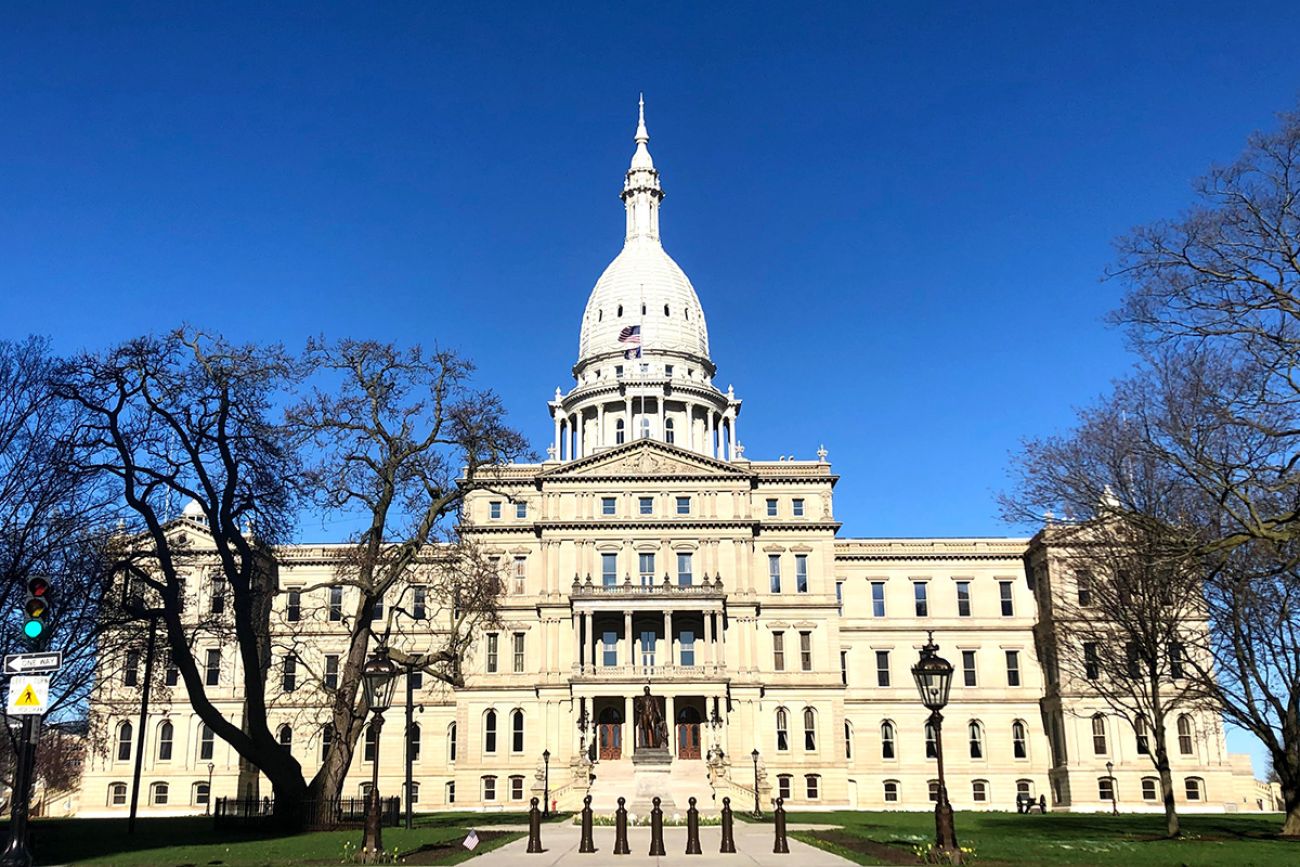Analysts hopeful about Michigan’s prospects even with revenue dip

- Michigan’s school aid and general funds are projected to have $31.5 billion in the current fiscal year and $31.3 billion in the next, less than previously predicted
- Discrepancy largely due to income tax cut, business incentives and recent tax relief efforts for seniors and low-income workers
- Less money available for state budget, but fiscal experts say they aren’t worried
Michigan officials will have billions of dollars less to work with than initially expected when crafting the state budget this spring.
But economic forecasters predicted Friday that the state is in a decent spot, expressing “cautious optimism” that Michigan’s economy can maintain momentum despite a projected national slowdown.
On Friday, Michigan’s top financial officials and economic experts provided a snapshot of the state’s economy and tax revenue projections at the state’s twice-annual Consensus Revenue Estimating Conference, which informs lawmakers and Gov. Gretchen Whitmer’s office as they finalize next year’s budget.
Related:
- Census: Michigan cities lost population in 2022. See how your town fared.
- Michigan’s population crisis: What you need to know. Why it matters.
- Panel: Michigan needs to act with urgency as population slides
The upshot? Revenues are lower than what was predicted in January, in large part due to major tax relief policies and business incentives approved since then and an income tax cut triggered under a 2015 law by unusually high tax revenues in fiscal year 2022.
Michigan’s school aid and general funds are projected to have $31.5 billion in the current fiscal year and $31.3 billion in the next, the Department of Treasury and the nonpartisan House and Senate fiscal agencies agreed Friday. That’s $883 million and $1.8 billion less, respectively, than January forecasts.
“If you take out that tax relief, and you just look at the economy, our revenues are consistent with expectations,” state Treasurer Rachael Eubanks told reporters Friday, noting that current projections are higher overall than 2019 revenues collected pre-pandemic.
An economic cushion
Forecasters predicted Michigan’s economy — a big driver in how much tax revenue ultimately comes into state coffers — will fare reasonably well in coming years, despite uncertainty at the national level.
After losing about 1 million jobs at the start of the pandemic in 2020, Michigan is on track to reach pre-pandemic employment levels by late 2023, said Gabriel Ehrlich, director of the Research Seminar in Quantitative Economics at the University of Michigan.
Michigan’s unemployment rates, currently at 3.8 percent, are projected to increase to 4.5 percent next year but drop back down to about 4 percent in 2025 under the forecasts provided Friday.
The forecasts predict continued job growth in Michigan, even as the national economy slows down — a departure from typical patterns where national economic issues are more acutely felt in Michigan due in part to the dominance of the automotive industry.
“The historical pattern is when the U.S. economy catches a cold, Michigan catches the flu,” he said. “We’re kind of saying this time is going to be different…we’re cautiously optimistic still here for Michigan.”
This time around, Ehrlich suggested blue-collar industries such as manufacturing could continue to see job growth due to ongoing backlogs of demand for microchips and other auto parts and ongoing supply chain issues.
University of Michigan forecasts predict an increase of 2,000 auto manufacturing jobs per year in Michigan through 2025. Long term, Ehrlich said the transition into electric vehicle manufacturing poses risks if the demand isn’t there.
The national economy “remains very difficult to read and forecast,” said Daniil Manaenkov of the University of Michigan, citing ongoing high inflation rates, uncertainty at the federal level over the debt ceiling and recent bank failures as pressure points that could cast a pall over current projections.
Tax reforms eat into available funds
Both the House and Senate passed separate budget bills last week amounting to roughly $80 billion total, slightly more than Whitmer’s record $79 billion budget plan proposed in February.
The updated projections could complicate matters, but some of the change was expected after Whitmer and lawmakers approved an increase to the Earned Income Tax Credit for low-income workers and a tax reduction on retirement income, which will take effect in tax year 2023.
That law also siphons off $600 million per year over the next three years from corporate income tax revenues into a business incentive fund.
Not factored into the administration’s initial plans was an income tax cut triggered by a 2015 law signed by then-Gov. Rick Snyder, Chris Harkins, budget director for the Whitmer administration, acknowledged Wednesday. That will result in a combined $646.7 million hit to state revenue in fiscal years 2023 and 2024.
Current projections account for a temporary income tax rollback, citing a March legal opinion from Attorney General Dana Nessel finding the cuts only apply for one year.
Republicans who were in the Legislature when the legislation was signed argue the rollback, if triggered, was not meant to be temporary and haven’t ruled out legal action to challenge Nessel’s finding.
House and Senate fiscal analysts also identified dips in net income tax and sales tax revenue that factors into the overall downward trend, and acknowledged that the COVID-19 pandemic has made forecasting future revenue more difficult.
"The magnitude by which many economic variables have changed in response to the COVID-19 pandemic has drastically increased the chances for estimation error," the Senate Fiscal Agency’s revenue projections report noted.
The state still has a multibillion dollar surplus left over from unprecedented pandemic-related revenue increases, but how much remains after the current budget cycle largely depends on the budget Whitmer and lawmakers end up with.
Problematic population trends
As Bridge Michigan reported earlier this month, the state’s population is aging, births are declining and the number of people decamping to other states is higher than that of new residents moving in.
Long term, that trend is expected to accelerate and exacerbate already-existing worker shortages, particularly in the healthcare industry, and result in less money coming in from state taxes, state demographer Jacklyn Butler said Friday.
“We have a large proportion of our population who are not working and fewer younger adults in prime working age years to support needs and services for that population,” she said.
Butler said Michigan was the 29th oldest state in 2001, but as of 2021 was the 14th oldest state in the nation and had the 46th slowest population growth rate among the 47 states that experienced growth from 2010-2020.
Moving forward, she said the population aged 0-24 is projected to decrease by 5 percent from 2021 to 2050, and the population aged 55 and older is projected to increase by 14 percent during that same time frame.
“Decreasing shares of this youngest age group means that there'll be even less replacement from younger age cohorts and fewer people aging into prime working years to sustain our labor force,” Butler said.
What happens now
At this stage, House and Senate leaders and the Whitmer administration will take these projections to the negotiating table.
It’s the first time in decades that Democrats have had complete control over the process.
Republicans responding to Friday’s updated projections urged caution in approving aggressive spending policies, warning that using up the state’s existing surplus without accounting for a possible economic slowdown would be a mistake.
“All of the evidence points to future state revenue falling, but the Democrat majority is spending money like they have it to burn,” Rep. Sarah Lightner, a Springport Republican serving on the House Appropriations Committee, said in a statement. “The budget proposals they have brought forward so far are simply unsustainable, and the projections we received today confirm that.”
Whitmer, in a statement, said Friday’s forecasts and Michigan’s current 3.8 percent unemployment rate indicate the administration’s current economic strategy is working.
“Let’s keep our foot on the accelerator and deliver a balanced budget that lowers costs on kitchen-table priorities and keeps growing our economy,” she said.
A bipartisan legislative committee will be formed to hash out differences between the plans in the coming weeks. Whitmer officials and legislative leaders aim to finalize next year’s budget this month or next, well ahead of the Oct. 1 deadline to do so.
See what new members are saying about why they donated to Bridge Michigan:
- “In order for this information to be accurate and unbiased it must be underwritten by its readers, not by special interests.” - Larry S.
- “Not many other media sources report on the topics Bridge does.” - Susan B.
- “Your journalism is outstanding and rare these days.” - Mark S.
If you want to ensure the future of nonpartisan, nonprofit Michigan journalism, please become a member today. You, too, will be asked why you donated and maybe we'll feature your quote next time!




